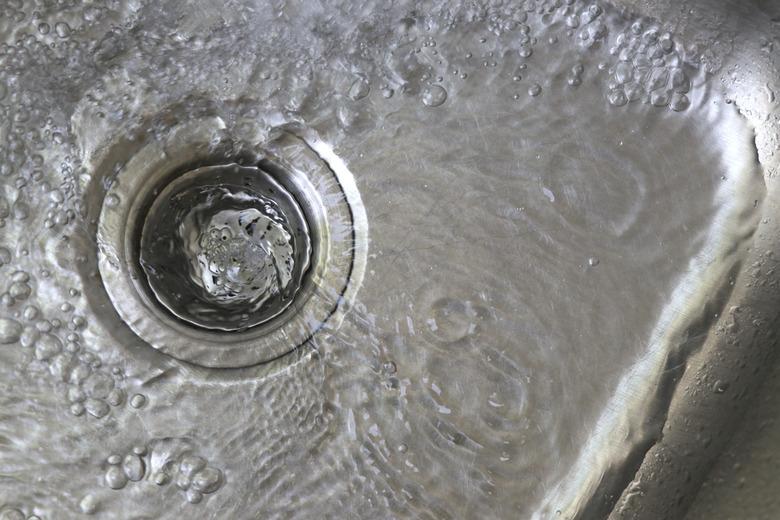Does Liquid Drain Cleaner Harm Pipes?
When you find yourself standing ankle-deep in water after a shower, it's a sure sign that you've got a clog in your pipes. Think twice before grabbing a bottle of drain cleaner, however. While safe for occasional use on slow drains, drain cleaner chemicals can damage your pipes and lead to expensive repair bills.
Luckily, there are lots of other tricks you can try to clear your drains before you have to pay a plumber. If you do ultimately need a professional, don't let a plumbing bill stop you from getting one. The amount you'll pay a plumber to clear a clog is substantially less than what you'll pay him to replace damaged pipes.
Sodium Hydroxide Drain Cleaner Issues
According to George Brazil Plumbing & Electrical, there are three types of liquid drain cleaners. There are caustic cleaners that use lye (sodium hydroxide) or potash, oxidizing cleaners that use bleach or peroxide, and acidic cleaners that use sulfuric or muriatic acid to clean pipes. Although they all do it a bit differently, each of these substances works by causing a chemical reaction that breaks down clogs.
Read more: Can You Use Drano in a Toilet?
You may recall from high school chemistry that chemical reactions can produce heat, and some produce quite a bit of it. When exposed to heat, both plastic and old metal pipes can bend, warp or even break open. It can take awhile for drain cleaning chemicals to move through a slow drain, giving them plenty of time to heat up your pipes along the way. The problem is even worse when a drain is completely clogged, forcing the chemicals to sit in one place rather than moving along.
Unfortunately, chemical drain cleaners sometimes loosen clogs rather than completely destroying them. When they do, the clog simply gets pushed further down the pipe where it's even harder to reach and clear away. It's also of note that the chemicals in drain cleaners aren't good for the environment.
Clearing Drains Safely
If you're wrestling with a clog, grab a plunger before you do anything else. Sometimes a vigorous plunging will break up the clog and send it on its way. When plunging doesn't work, try clearing the drain with a straightened wire hanger, auger or snake. You can easily find augers and snakes at your local hardware store. These manual drain cleaners won't hurt your pipes.
Read more: How to Clean a Bathroom Sink Drain
While you're at the hardware store, consider picking up a bottle of enzymatic drain cleaner. These cleaners contain living bacteria that literally eat drain clogs. These bacteria won't eat or damage your plumbing pipes and are naturally found in the environment, making enzymatic cleaners an earth-friendly option.
You could also try making a homemade drain cleaner. To do so, Terry's Plumbing suggests stirring together vinegar and baking soda in a cup. The mixture will foam and fizz, so mix it over your drain. Pour the foaming mixture into your drain and leave it overnight. Flush the drain well with warm water the next morning.
Call for Backup
If you've tried everything and your drain is still clogged, it's time to call a plumber. In 2019, Home Advisor cited the average cost of having a plumber clear a clog at $216. Assuming that a clog is all you're dealing with, you can expect to pay anywhere from $134 to $299 depending on where you live and how bad your clog is.
A plumber can clear your clog and make sure that's really the problem. Sometimes broken pipes, encroaching tree roots and other plumbing issues masquerade as clogged pipes when the problem is much more serious. A plumber can clear away your clog and make sure the rest of your plumbing is in good shape and problem-free.
